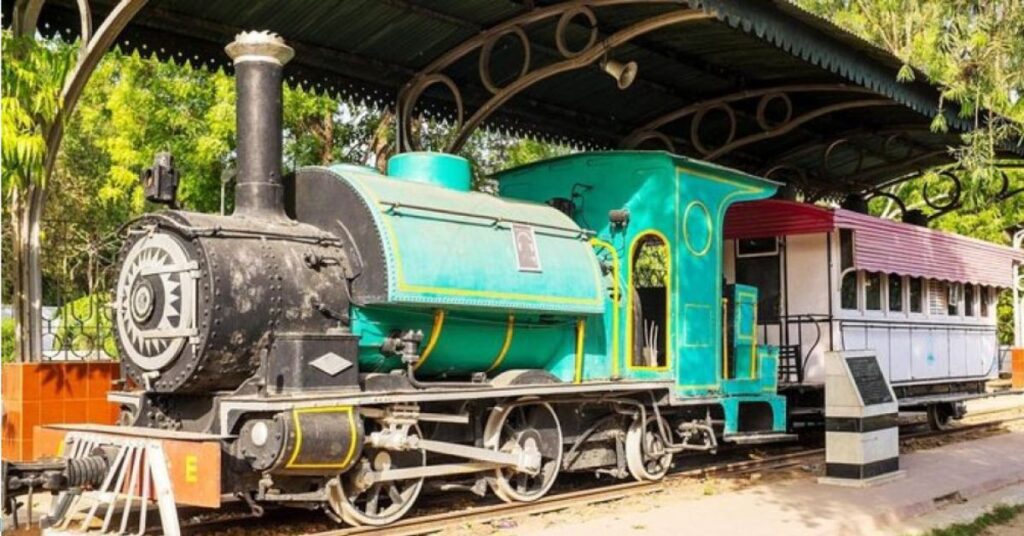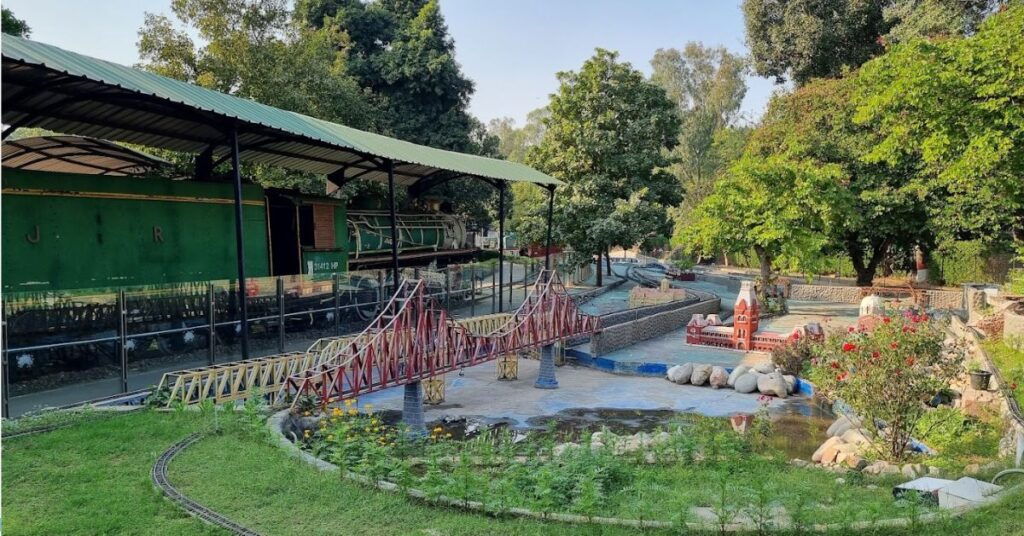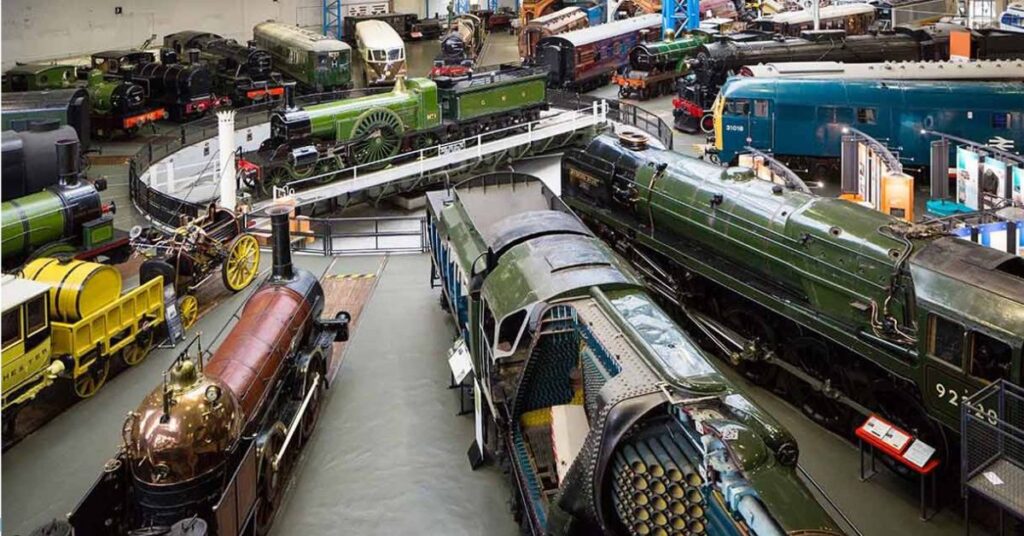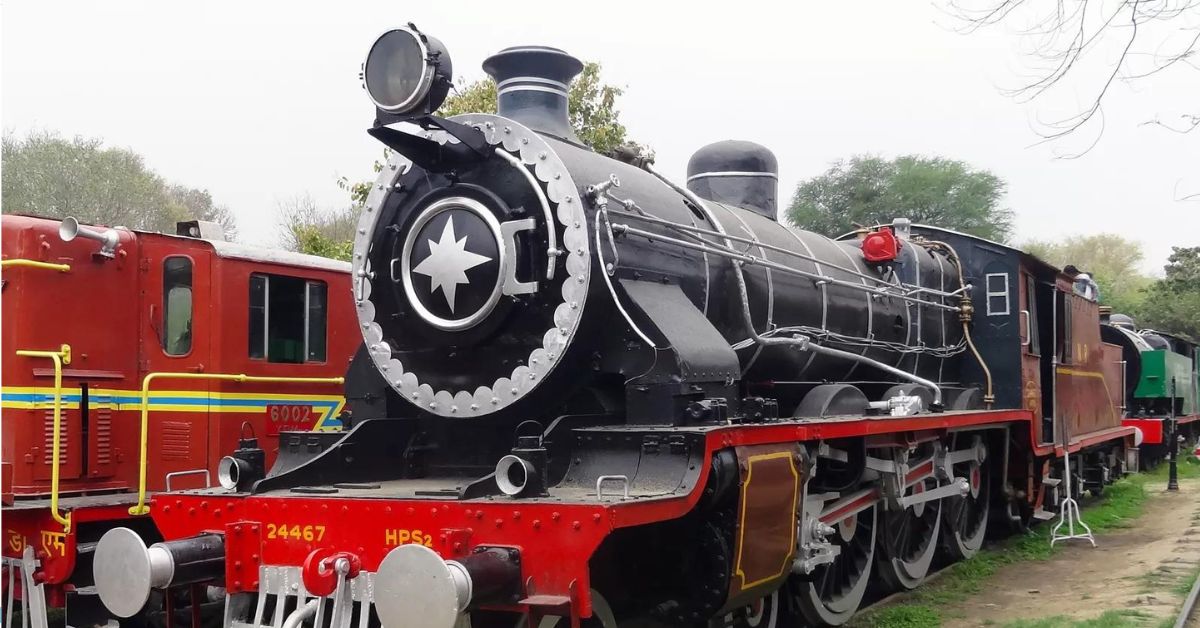The National Rail Museum in the heart of New Delhi is a wonderful place for everyone, from history lovers to families and train fans. This big museum, spread over 11 acres, opened its doors in 1977 and takes you on a fun journey through India’s amazing railway history.
With over 100 real trains on display, including the world’s oldest working steam engine, the Fairy Queen, you can see how Indian trains have changed over time. You’ll find old train cars, pictures, signals, and other cool things that show how trains helped shape India.
How to reach:
By Air:
If you’re flying into Delhi, you’ll land at Indira Gandhi International Airport. Here’s how to reach the museum from there:
- Taxi: The quickest option. It takes about 30-40 minutes, depending on traffic.
- Metro: Take the Airport Express Line to New Delhi station, then switch to the Yellow Line towards Jor Bagh. From there, it’s a short ride or walk.
- Car: Book a private car or use a ride-sharing service for a direct journey.
By Metro:
The nearest metro station is Jor Bagh on the Yellow Line. From there, you can take a short auto or taxi ride, or walk for about 20 minutes.
By Bus:
Delhi Transport Corporation (DTC) buses serve the area. Check their website or app for routes and schedules. Look for buses going to Chanakyapuri or Dhaula Kuan.
By Car or Taxi:
The museum is easy to reach by car or taxi. There’s plenty of parking available.
By Auto-rickshaw:
Auto-rickshaws are common in Delhi. Just tell the driver you want to go to the National Rail Museum in Chanakyapuri.
By Bicycle or Scooter:
Rent a bicycle or scooter for an eco-friendly option. There are rental places around the city.
Best time to visit:
Winter (October to March)
This is the most pleasant time to visit the National Rail Museum. Enjoy comfortable temperatures, clear skies, and ideal conditions for exploring both indoor and outdoor exhibits.
Summer (April to June)
Delhi’s summers are very hot. While you can still visit, be prepared for high temperatures. Early mornings or late afternoons are the best times to go. Remember to stay hydrated and protected from the sun.
Monsoon (July to September)
The monsoon season brings heavy rain and humidity. Outdoor activities might be limited. However, the museum’s indoor exhibits offer a great escape. Be prepared for wet weather.
Autumn (October)
As summer ends, autumn brings comfortable weather with reduced humidity. It’s a good time to visit before the peak tourist season begins.
Spring (March)
Spring offers pleasant temperatures and blooming surroundings. It’s a great time to enjoy both indoor and outdoor exhibits.
Attractions:
Historical Locomotives and Carriages:

The museum has a whole bunch of really old trains that tell a cool story about how trains changed in India. There’s even the Fairy Queen, the oldest train in the world that still works! It’s like a time machine. You can see how trains used to look, from the very first ones to fancy trains for kings and queens. It’s amazing to see how trains have changed over time and how important they’ve been to India.
National Rail Museum Outdoor Exhibits:
The Railway Heritage Park is like a big outdoor train playground! You can walk around and see lots of old trains up close. It’s like a time machine for train lovers. There are super old steam trains and even electric ones that look really cool. You can imagine how it was to travel on these trains a long time ago. There’s also a tiny train that you can ride on! It’s like a fun adventure through the park. Kids and grown-ups love it. It’s a great way to see all the old trains from a different view.

Indoor Galleries:

Inside the museum, you can explore lots of cool things about trains. There are special rooms with models and pictures that show how trains changed over time, from old steam trains to super fast ones today. You can see tiny models of train stations and tracks, which is really fun to look at. There are also old papers and maps that tell the story of how India’s railway grew bigger and better. It’s like stepping back in time and learning about trains in a really interesting way.
Local Experiences:
- Shopping Spree: Immerse yourself in the vibrant energy of Connaught Place or Janpath, where you can find everything from souvenirs to handmade crafts.
- Discover History: Take a step back in time at Purana Quila, a magnificent fort with stunning architecture and lush gardens.
- Iconic Landmarks: Visit the iconic India Gate, a war memorial that offers breathtaking views and a peaceful atmosphere.
- Culinary Delights: Savor the flavors of Delhi at local restaurants in Chanakyapuri, offering a diverse range of cuisines.
- Architectural Marvels: Admire the grandeur of India’s political and colonial past with visits to Rashtrapati Bhavan and Parliament House.
- Nature’s Escape: Find tranquility in Lodhi Gardens, a beautiful park perfect for relaxation and exploring historical tombs.
- Art and Culture: Immerse yourself in India’s rich artistic heritage at the National Museum and the National Gallery of Modern Art.
- Local Life: Experience the city like a local by taking a ride on an auto-rickshaw or using the Delhi Metro.
- Street Food Heaven: Indulge in Delhi’s famous street food, from spicy chaat to delicious kebabs.
Travel tips:
Plan ahead: Check the museum’s opening hours and consider purchasing tickets in advance to save time.
Dress comfortably: Wear suitable clothing and shoes for walking.
Stay hydrated: Bring water, especially if visiting during warmer months.
Sun protection: Apply sunscreen and wear a hat when exploring outdoor exhibits.
Allow ample time: Plan to spend a few hours exploring the museum’s vast collection.
Accessibility: Check for accessibility options if needed.
Choose convenient transport: Use Delhi Metro or taxis for easy access.
Capture memories: Check photography rules before snapping pictures.
Enjoy the amenities: Take advantage of the museum’s café and shop.
Get interactive: Engage with the museum’s interactive displays for a fun learning experience.
Explore beyond the museum: Combine your visit with nearby attractions and local dining.
Conclusion
Train history buffs, families, and anyone curious about India’s past should add the National Rail Museum in Delhi to their travel itinerary. Xplro.com recommends this unique and immersive experience! Explore a rich collection of historical locomotives, detailed exhibitions, and interactive displays that showcase the evolution of Indian railways from their beginnings to today’s modern trains. Marvel at the world’s oldest working steam engine, the Fairy Queen, or lose yourself in the vast array of vintage carriages. Take a delightful ride on the miniature train for a charming perspective on the museum grounds. Beyond the trains, the museum offers scenic grounds, educational programs, and on-site amenities like a shop and cafe, making your visit both educational and enjoyable. Complement your trip with local experiences Xplro.com can help you find – explore historical sites, savor delicious local cuisine, and soak in the vibrant atmosphere of Delhi. The National Rail Museum stands as a testament to India’s rich railway heritage and promises a memorable and enriching experience for all visitors.
FAQs
1. What are the visiting hours for the National Rail Museum?
- The National Rail Museum is generally open from 9:30 AM to 5:30 PM daily except Mondays and public holidays. For the most accurate and current timings, please visit the museum’s official website before your visit.
2. What is the cost of admission?
- The typical entry fee is around INR 50 for adults, while entry is usually free for children under 5 years. For the latest ticket prices, check the museum’s website.
3. Are there discounts available for students or senior citizens at National Rail Museum?
- Discounts for students and senior citizens are often available. The specific rates can change, so it’s advisable to confirm the discount details on the museum’s website or inquire at the ticket counter.
4. Does the National Rail Museum offer guided tours?
- Yes, guided tours are available and can be arranged either in advance or upon arrival, depending on availability. These tours provide detailed insights into the exhibits and the history of Indian railways.
5. Is photography allowed inside the National Rail Museum?
- Photography is generally allowed in most areas of the museum, though flash photography may be restricted. For specific guidelines, check with the museum staff or observe posted signs.
6. Is the National Rail Museum accessible for visitors with disabilities?
- The National Rail Museum is designed to be accessible to visitors with disabilities, featuring ramps and other facilities. For particular needs, contacting the museum beforehand is recommended.
7. Are there food and beverage options at the museum?
- The museum has a café where visitors can purchase snacks, light meals, and beverages. Seating areas are also provided for relaxation.
8. Can I buy souvenirs at the National Rail Museum?
- Yes, the museum has a gift shop offering a range of souvenirs, books, and railway-themed items for purchase.
9. Can I bring outside food or drinks into the National Rail Museum?
- Outside food and beverages are generally not allowed inside the museum. Visitors are encouraged to use the café facilities for refreshments. Confirm the policy with the museum before bringing your own food.
10. Are there any special events or temporary exhibitions at the National Rail Museum?
- The museum occasionally hosts special events and temporary exhibitions. For information on these activities, visit the museum’s website or contact the information desk.
11. How much time should I allocate for a visit?
- A visit to the National Rail Museum typically takes between 2 to 4 hours, depending on your interest level and how thoroughly you wish to explore the exhibits.
12. What are the best ways to get to the National Rail Museum?
- The museum can be reached via the Delhi Metro (nearest station: Jor Bagh), as well as by taxis, auto-rickshaws, or private cars. There is parking available for those who drive.






